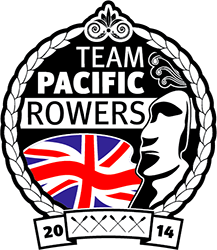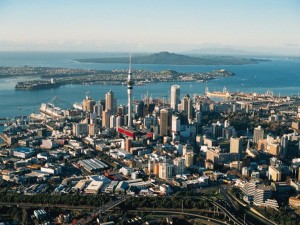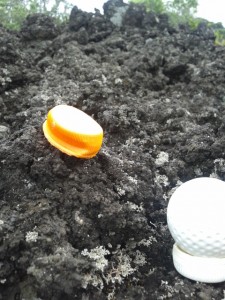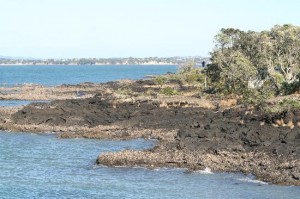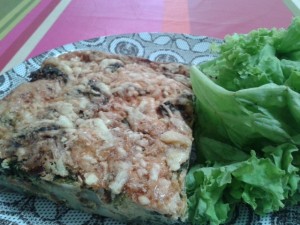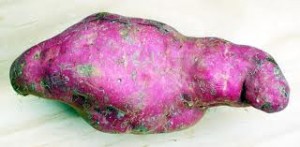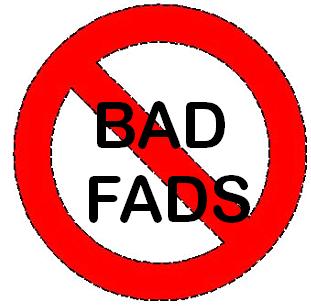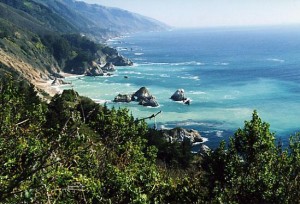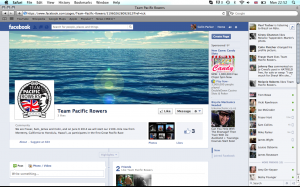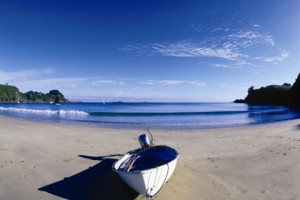Team Pacific Rowers, an entrant in 2014’s Great Pacific Race from California to Hawaii, has officially launched its #PlasticFree Campaign.
The four Brits – Fraser, Sam, and James, who live in the UK, and Colin, who lives in New Zealand – want to complete the row to raise awareness of plastic and rubbish in the world’s seas and oceans, in particular the Great Pacific Garbage Patch.
The route between Monterey and Honolulu will take them to the fringes of the patch, where trash from land and sea gets caught up in the huge rotating ocean current, or gyre.
Four more ocean gyres across the globe act as circling conveyor belts for our rubbish, which is eaten by wildlife, deposited indiscriminately on coastlines, or simply bobs for thousands of miles, continually being broken down by sunlight and seawater but without fully degrading for hundreds of years.
Rower Colin Parker said: “Taking on such an epic challenge as the Great Pacific Race affords us the opportunity to do some good, and highlighting a huge problem facing our oceans seems a perfect tie up. I am ashamed to admit that this time last year I had never heard of the plastic gyres, but the more you learn, the more you understand the tragic consequences.
“But the silver lining is there are some amazing people out there who are dedicating their time, money and careers to getting our seas cleaner and raising awareness of the harmful effects of our dependence on plastic. Other groups carry out in-depth, long-term scientific research into plastic in our seas. We want to help publicise all of this.
“I have been out with clean up crews in Auckland and they do an amazing job against a continuing torrent of trash. The amount of rubbish that makes it into the waterways is astounding, and Auckland is a fairly small city compared to some.”
The campaign will mostly be about publicising the amazing work of people across the globe who are fighting the plastic menace in our seas, including beach cleaners and plastic abstainers.
And Team Pacific Rowers will put its time where our mouth is. Colin will be dedicating two days a week to sea clean ups in and around Auckland’s Waitemata Harbour, in New Zealand.
Each week two new blogs will appear on www.pacificrowers.com with interviews, information and beach clean up reports, and there’ll be plenty of and news-spreading on our social media pages @pacificrowers and www.facebook.com/pacificrowers.
In the first week we will publish the first half of an interview with Danny Kirschner (@anosinplastico), a man from Athens, Georgia, who is attempting to go a year without plastic. We will also have a blog from Colin about a plastic pick-up on Auckland’s beautiful Rangitoto Island.
Rower Fraser Hart said: “Each of us in Team Pacific Rowers loves the ocean: we swim in it; surf in it; dive in it; eat from it; kayak on it; gaze at it; SUP on it; travel on it; party next to it; get seasick on it; and in our attempt to row halfway across the biggest ocean on the planet, will live on it. We don’t want it full of trash.”
Team Pacific Rowers is a UK/NZ quartet hoping to become the first crew of four to row 3000 miles (2100nm/4500km) from Monterey, California to Honolulu, Hawaii. The crossing, which is scheduled to start on June 8, 2014, is expected to take the foursome five weeks to complete, during which they will row in pairs, two hours on two hours off, 24 hours a day.
They are an entrant in the Great Pacific Race, organised by New Ocean Wave, and will battle against about 19 other teams, including solos and pairs, to become the first to Hawaii.
The team is now looking for corporate partners to help fund the expedition in return for some exciting benefits, including naming rights, brand awareness, photography and video and more, further information on which can be found on our website www.pacificrowers.com.
Any groups that would like to feature in Team Pacific Rowers’ campaign, or companies wishing to sponsor Colin’s volunteering, please email us at info@pacificrowers.com.
ENDS
For further details contact us at info@pacificrowers.com or visit www.pacificrowers.com. Our Twitter handle is @pacificrowers.
